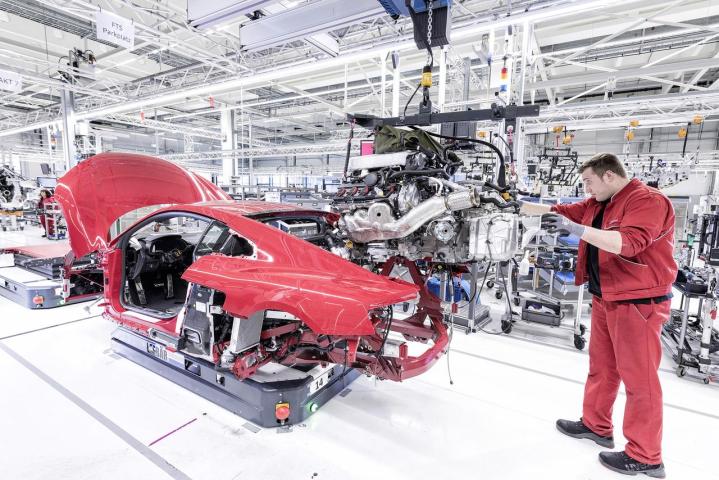
In February, the firm debuted an ergonomic, carbon fiber-clad ‘chairless chair,’ which helps factory workers improve posture and reduce leg strain. Now, a new feature in Audi’s online magazine Encounter looks to the future once again, envisioning a ‘smart factory’ inspired by science fiction.
“Automobile production as we know it today will no longer exist in the future,” said Prof. Dr. Hubert Waltl, a member of Audi’s Board of Management for Production. “It will become more connected, more intelligent and more efficient. At the same time, our employees will continue to be the drivers of successful production.”
Practically, the brand sees human-robot collaboration, 3D printed parts, drone material transport, and piloted cars driving themselves off the production line as the next steps toward a truly ‘smart’ factory.

“New specialists such as network architects will increasingly move into our industry,” continued Waltl. “With their IT expertise, they will configure machinery so that all processes will be extremely well coordinated and the factory equipment will optimally support the employees.”
These are clearly ambitious goals, especially given that Audi’s production facilities aren’t exactly in the stone age now.
As Encounter details, many of the automaker’s factories employ an augmented-reality tool called ‘Window to the World,’ which allows engineers to digitally envision vehicles by projecting 3D components onto a car’s basic form. It sounds like Minority Report, but Audi says it helps to refine concepts quickly, efficiently, and inexpensively.
These drafts are vital in the design process, and can seamlessly transfer over to Audi’s tooling division, which explores the 3D printing techniques that the group hopes to proliferate in the coming years.
At the firm’s gorgeous assembly plant in Ingolstadt, robots work side-by-side with humans, acting much like surgical assistants as they hand technicians components “at exactly the right speed and in an ergonomically pleasant position.”
Audi has always been a brand that looks ahead. In many ways, though, the future is now.


